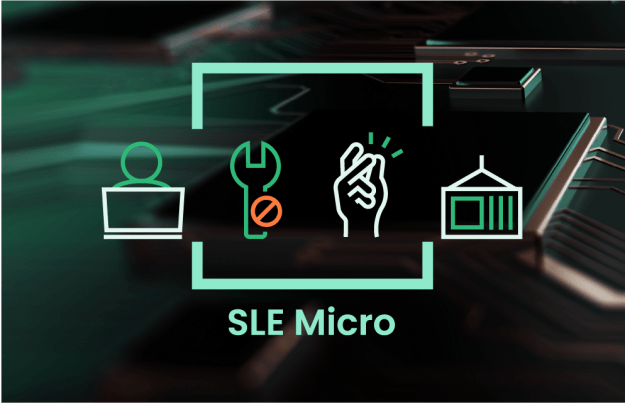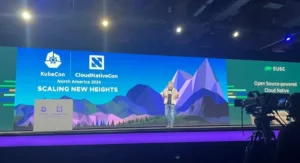While it’s not going to be of much use to those running Linux on a desktop or laptop, minified versions of Linux like SUSE’s SLE Micro are becoming essential in the enterprise, both for DevOps teams working in containerized environments and for IoT devices running at the edge.

Yesterday SUSE released a new version in one of its lines of SUSE Linux Enterprise operating systems — SUSE Linux Enterprise-Micro 5.2
Don’t worry, this doesn’t mean that if you’re using SUSE to run your desktop you’ll need to upgrade, even if you’re using SUSE to run a server or two. This one’s for DevOps teams who use SLE Micro as part of their container infrastructure or in edge deployments, or for manufacturers who embed it in their internet of things devices.
It’s unlikely that many of you are running SUSE anyway. Similar to Red Hat, SUSE does make a desktop version of it’s Linux distribution available, SUSE Linux Enterprise Desktop, but its use is generally confined to enterprises because it costs $50 yearly to use without a support contract, or $120 a year with standard support. Those who want to run SUSE at home will generally use the company’s free community edition, openSUSE, and use the Leap edition for a SLE clone, or Tumbleweed for a rolling release version.
As the name implies, SLE Micro is SUSE’s version of the Linux operating system that’s been minimized so that it doesn’t use much in the way of system resources, which can be in short supply in IoT and edge deployments, and so that it presents a minimal attack vector, which is important across the board.
Why Minified Linux?
With enterprises’ ever increasing use of containers and IoT, all of the server-focused Linux distributions offer minified versions of their distribution. Canonical, for example, has Ubuntu Core, which has the distinction of supporting Snaps for installing sandboxed software, an addition that could be especially useful for IoT and for enterprise edge deployments.
Red Hat offers two reduced sized Linux distributions. Red Hat Enterprise Linux for Edge is primarily intended for edge and IoT deployments, and is useful because even though it installs with fewer than 400 packages (a full RHEL installation contains at least 8,000 packages), additional RHEL packages can be added as needed. For containers, Red Hat offers Universal Base Image, which is designed to work well in container infrastructures that utilize multiple operating systems. Interestingly, use of Red Hat’s UBI isn’t confined to Red Hat subscribers, but can be freely downloaded on Docker Hub.
Fedora, Red Hat’s community distribution, also offers separate minified versions for Edge/IoT and containers: with Fedora IoT for the former and Fedora CoreOS for the latter.
What’s New in SLE Micro 5.2?
Raj Meel, a product marketing manager at SUSE, said in a blog that the new release is primarily “a stabilization and consolidation release, geared towards improving usability and reliability.”
While that definition may have a not-much-to-look-at ring to it, the new release does come with a couple of useful new features, including a self-install image for reducing deployment time.
“Self-install image is a bootable pre-configured image that simply installs onto the target system and then uses the same configuration methods of the already existing pre-configured images,” Meel explained. “Self-install image improves deployment process by removing manual steps in deploying SLE Micro.”
It also ships with additional cockpit modules for web-based administration, which enhance the usability for web-based configuration and administration.
SLE Micro 5.2 is available now for AMD/Intel 64, Arm, and Z Systems.
Christine Hall has been a journalist since 1971. In 2001, she began writing a weekly consumer computer column and started covering Linux and FOSS in 2002 after making the switch to GNU/Linux. Follow her on Twitter: @BrideOfLinux








Looks like you did not take a look at MicroOS so far. Originally based on Tumbleweed, there is a version based on Leap available as well. SLE Micro is the commercial offering for it.
Surprisingly many people from the openSUSE community use MicroOS as basis for their desktop system.
Whoever thought that having a ticker tape on a web page should go and joint Microsoft. It is annoying and distracting when reading an article and probably slows down the browser.